Atul Singh: Welcome to FO° Talks. With me is Ashank Desai, who’s an entrepreneur par excellence. Today, we will discuss the fascinating story of India’s NASSCOM. Welcome, Ashank.
Ashank Desai: Thanks, Atul. Thanks to be here with you, as always.
Atul Singh: Excellent, excellent. So let’s talk about what NASSCOM is. The full form of NASSCOM is the National Association of Software and Services Companies. NASSCOM is the acronym. It was born in 1988, a little more than 19 months before the Berlin Wall fell on November 9, 1989. And we know what happened then: Two years later, the Soviet Union collapsed. In contrast, NASSCOM went on a rocket ride — up, up and away. And Ashank Desai was one of its founders. He is a past chairman, he had a ringside view. In fact, he was one of the people who made this rocket. So today, we are with an entrepreneur who’s created a fantastic software company, or many software companies. He has created public policy schools and institutions, both in IIT Bombay and in IIM Ahmedabad, his two alma maters, and he’s someone who’s part of the team who made NASSCOM such a big deal. Welcome, Ashank, again. Let’s get cracking with the story of the Indian IT industry. Even before NASSCOM began, what was going on?
Ashank Desai: So NASSCOM started at those interesting times, as you said — the Berlin Wall, Russia and maybe just later, there was the whole liberalization of the Indian economy, too.
Atul Singh: It happens the same year the Soviet Union collapsed, actually. There was a balance of payments crisis, and this happens earlier in the year in 1991. Those of us who are young enough remember those days. By the end of the year, the Soviet Union is no more. And in 1991, the Narasimha Rao government has, with Manmohan Singh as Finance Minister, taken away some of the License-Permit-Quota Raj. And of course, the Indian economy finally grows, and no longer can people say that we grow by the Hindu rate of growth. Actually, it was the socialist rate of growth, not the Hindu rate of growth. But over to you, Ashank. Heady time, and you were a part of it! You are one of the people who helped grow India. So let’s hear from you: What was going on before NASSCOM?
Ashank Desai: Yeah. So I always say that I have lived a dream — a dream of IT industry, a dream of seeing the IT industry at less than $50 million becoming $250 billion, which is like, as you would guess, 5,000 times growth in a generation in dollar terms. I think it may be another 2x if you put it in rupee terms. But the point I’m making is, the dream that I lived is what I will describe. And NASSCOM is part of that story. So go back to the 1970s and late ’70s, early ’80s. The whole IT industry, as we call it now, is full of large hardware players. The hardware players are making large mainframes, minicomputers, and they used to develop what is called now software and software services, but they bundled it with hardware. And then there was some interesting thing that happened in the US, where IBM was told in some legal battle that they have to separately charge for hardware and software, and not as a combined one. And that opened up the software industry, actually—
Atul Singh: And that led to the rise of Microsoft and Bill Gates. (Laughs)
Ashank Desai: Yeah. Later — and Bill Gates and many other things that all we know. So some of us started in late ’70s and early ’80s software companies. And Mastek is one of those companies. With my colleagues, four of us were the founders. But it was such a small company and such a small industry that we were struggling to grow. We were struggling to show profits. And by ’86, you will be surprised that our whole revenue was just 50 lakhs. Or, if I go by the present dollar rate, it may be less than $10,000. And we were rated as one of the top five or six companies in India. Such was the size. (Atul laughs) The point I’m making is, we were all struggling. And there was this feeling that we need to look at global markets, not be constrained by Indian market, because there was a feeling that because of Indian entrepreneurship, because of Indian talent — which is very good in maths and science — because of English language and because of our cost advantage, India has an opportunity to look at the global software services market. And then, at that point of time, suddenly, all of us were feeling a great feeling of looking at a much larger vision. Yet we were constrained by a lot of things that were happening in India in terms of issues of movement of people, movement of money, financing, our cost of marketing and sales in US and other countries. You will be surprised that when I first wanted to go abroad, I wanted a foreign exchange. And then I had to apply and wait and all those things. And then somebody asked me from RBI, “Why do you want foreign exchange?” He said, “You are not doing any exports. You are not earning anything.” I said, “Sir, to earn, only I have to go there.” So those were the times. (Atul laughs) So we said, we need to come together and attack this whole problem of a) the internal controls; b) the image of India and marketing issues that we had. Everybody thought, “India and software? Come on. You only have snakes and elephants moving on the roads.” That was the image. So we needed to change so many things, and we could not have done it unless we came together. So this dialogue about coming together as one association started happening sometime in ’83, ’84, ’85 — that period, you know? There were talks in Mumbai, where I am based. There were talks going on in Bangalore, which was also upcoming at that time. Then there were people going abroad, and some of them were talking in some Indian delegations that used to go there to promote software. So there was some discussion there among Indian leaders, so there are various stories there. But the whole thing got kind of converged into a big movement sometime in 1987. So some of us came together. And one Mr. Harish Mehta — who is also one of the founders, took—
Atul Singh: He’s written a book, if I remember correctly. He’s written a book on the founding of NASSCOM. And he’s a friend of yours, as I understand.
Ashank Desai: Yeah, he’s a good friend of mine for many decades, and he has written a very interesting book, which is doing well. So, then he invited all of us. He said, “Why don’t we start working on this whole issue?” However, there was a problem there. The problem was, there was already an association of hardware companies called MAIT. And, as I told you, software was given almost free by hardware companies — now we can do it the other way. But at that time, hardware was the main business. So they were a large association, and we were a small part of that association. So he said, “Look, guys, this is not going to work. We are not about domestic market. We don’t want to sell anything much in domestic — we want global vision. And you have your own market in India. You want to sell hardware, please do it. You can’t support us.” But they didn’t agree. We had a chairman that time called Mehra, and he tried to come and convince us and so on and so forth. So many things happened. But we decided to move ahead, and we met in Delhi sometime in ’87. And that was an inflection point where 30, 40, 50 of our software companies all met together. Mastek was there, Infosys was there. And then there were other software companies who were also present there. There was a TCS, which was, of course, largest for me even then. So all of us were there, and we stated, “We must do a separate association.” The chairman of MAIT came that time; he convinced us. He still said, “Don’t do it. We can go together.” But we were clear. And that was the foundation. So that meeting then was the foundation point of NASSCOM. I was there. Harish Mehta was there. Then there were other colleagues — particularly two founder members who were later felicitated by the Prime Minister — four of us as founders of NASSCOM.
Atul Singh: Who were the other two?
Ashank Desai: Yeah, one was Mr. K.V. Ramani, who was running a software company called Future Software. And one Mr. Saurabh Srivastava, who was, of course, in Tata Burroughs at that time — or maybe it was Tata Unisys that time, I don’t know exactly — but he was working in one of the startup software companies. And there was, of course, people like Nandan Nilekani who were also very keen to take part. He was there. And I think Mr. Narayana Murthy was also there in that meeting. I am not 100% sure, but he, of course, helped us greatly later. So all of us were there. And some of us said, “Now we should write a constitution.” And we were wondering how to write a constitution. We were not experts, so we looked at many other associations. And we — six, seven, eight of us — were signatories. I was one of those privileged ones whose name comes first, because there was nobody above me in terms of alphabetical order! (Both laugh) So anyway, we created a constitution with values, with the idea that we will do something very, very professional. We had decided terms of chairmanship. We had decided how we will get elections. We had decided what are the things that we should put boundaries on in our association, and so on and so forth. We thought about it, because we were all first-generation entrepreneurs — mostly. Most of us — as you know, Infosys, Mastek — these are all early founders of the IT industry. And then we had, of course, people from larger companies like TCS and Tata Burroughs, and so on. So we wrote that constitution. But we did not have any idea of doing elections. So we wanted somebody who could lead that for the few years before elections happen. And we invited one Mr. Prem Shivdasani, who was actually a CEO and well-respected person in the hardware industry at that time, and he had retired and started something of his own. But real elections happened, and then Harish Mehta became our first chairman. So that is the story of the beginning of NASSCOM.
Atul Singh: So it is a story wherein a few people feel a need, come together and you break away from an early association that involves hardware. So it’s almost like the breaking away — although not so dramatic — of any church from the big Catholic Church. You became the Protestants and therefore succeeded, I suppose. But walk me through the conception stage. Who was the person who first conceived of NASSCOM? Because we now know how it began, but was it you? How did you get the idea that it had to be services, not just software, because it could very easily just mean National Association of Software? So tell us a little bit more about the early founding, the process of founding NASSCOM.
Ashank Desai: Yeah, as I said, this founding was a kind of process where many people got involved. And then that Delhi event we had, where many people came, and some of them decided to move this ahead. And as I said, four of us who were later felicitated were the main people who spent a lot of time doing groundwork. But having said that, I would not tell you that we were the only four people. As I said, there were people from the IT industry, like Mr. Nandan Nilekani of Infosys. Then there were people from TCS and other persons who were all involved. So I don’t think it is one person who could say, “I was the founder of NASSCOM.” It was a team effort. At the same time, there were some people who took more interest and spent their time, money and efforts moving forward. And that’s where this constitution and name came from. That name came out of this group discussion of eight, nine, ten of us who had signed that constitution.
Overcoming competition and building trust
Atul Singh: So that brings me on to another question, which is that Indians are famously fractious. You look at any battle — Battle of Panipat: First, the Marathas piss off everybody else, including the Jats, who walk off and don’t fight with them. And then, of course, all the different Maratha sardars have their own rivalries. And that is the story of Indian history. So how did the famously fractious Indians come together and literally create a team of rivals?
Ashank Desai: Absolutely, you have some brilliant question there. And that’s really the foundation of NASSCOM. We were all competing, we were very small, we were going to the US and UK and competing against the same customers. But there was a streak of professionalism, a streak of ethics, honesty, larger vision — those were the values of this first generation of entrepreneurs, like me and many others. And that is the reason we felt that we could trust each other when we worked together to make the industry larger. So the word, “co-opetition,” was later coined by some American author and so on. This was that. This was like competing outside the office of NASSCOM — but when we come inside, we don’t push our companies, we don’t talk about our companies. We just see how we can make [things] happen. And that was one of the reasons — apart from a few others, which we’ll talk about — that made NASSCOM successful. You see, there are many associations today that get split. They start and then say, “Oh, no, no, my interests are not being served,” or “I want my company to get something,” and so on and so forth. And India — as you know — that crab story, that people try to pull everyone down, and all those things like that…
Atul Singh: It’s all so true, because you go to the Indian embassy and the defense attaché will tell you that, “We are the Shudra, and the Indian Foreign Service officer is the Brahmin, and I’m a nobody.” And then you meet the RAW guy, and he’ll say, “Oh, I am the Shudra, and I never get to do anything important, and I don’t get to do my work.” And then the IFS person will tell you that, “These defense guys and RAW guys, they know nothing. We know everything.” So this is not just within castes. It is between services, it’s between companies. It’s a feature of our culture. You’re right — that crab metaphor is so true. But you overcame it. So that’s super rare.
Ashank Desai: In fact, even today, people come and ask some of us to speak on how this NASSCOM happened. Because they see in our associations, we have not been able to bring this kind of alignment, this kind of cooperation, and, you know, ego-busting policies. So that’s one of the things that happened. We were lucky, in a way, you can say. But I think we were about a new generation — that post-liberalization entrepreneurs.
Atul Singh: Post-1991.
Ashank Desai: Yeah. We were looking at the world with different lenses. We were not past. We had abandoned the past. And that is what is the story of NASSCOM — that we abandoned the past and did many things that an association should not be doing, in a way, or industry should not be doing.
Atul Singh: So you had a fresh vision for the future — let’s put it that way. So that’s one thing that helped you succeed. What were the other things? You alluded to them — outline them for us.
Ashank Desai: So, out of that association of not competing when we are in NASSCOM, we created a next level of great bond and trust among some of us early founder members, you know, that I described. And we even today meet — now, it is almost 37 years, as you know. We still meet today, along with our families, talk about ourselves, industry and past, and many other things, and see that we still work together. So it was not only about industry and a formal relationship — it went beyond that. So that’s one point. Even today, if you look at NASSCOM — there are many new people who have come after us, you know, it has become all young people who have come — they have become chairmen. But we, every year, go out along with family and past chairmen and existing council, along with family — enjoy, sing, dance and discuss also everything — and come back saying, “Oh, we are all together.” So that is one culture — the team culture — propagated further on. That’s one. Number two is about what I would call professionalism, or what I would call an attitude of a liberal economy paradigm, if I may call it. It is about free markets. It is about merit — as the real arbiter of ultimately what happens. It is about seeing that we do not try to cut corners. So this liberal attitude and professionalism is the second part which was there. Because if that was not there, we would have resisted many changes that we wanted to do. Our government wanted to help us. We all said, “We need to trust each other, and we should find government as a partner.” So this liberal professional attitude meant that we don’t suspect government. We help government to perform better to help us. And that’s where my motivation to start a public policy school is out of that. I have seen how industry can influence government and professional government bureaucrats to make changes happen. If you educate them, if you tell them policy options and if you have the right people there, you can make a difference. So we closely worked with the government out of that attitude of liberalization. The third one was, of course, realizing that we need to change the Indian way of doing business. We have to be focused on highest quality, highest governance of our companies and our customers. We realized [our customers] were not necessarily from India. They were from all over the world — large corporations. They looked at professional partners. Because imagine doing software at a distance — you need to trust people. And we did many things to make that trust happen. So that is another part. And last, and not the least, was, we were innovative in terms of finding out as a group. And hence, NASSCOM innovated many things. We, in industry, innovated many things. But this is not a story of industry — this is a story of NASSCOM. So I will say that NASSCOM also was innovative.
Atul Singh: Understood. So you are describing features that are almost universally applicable. I could apply these features to Buddhism. You know, the reasons for success: culture, teamwork, liberal attitude, openness, professionalism. And in a way, you could say this goes back right to the Nagar-set tradition of ancient India, or, for that matter, the cities of Europe that succeeded, wherein the notables — Les Notables — got together and had a long-term vision for the future. And that is fascinating because it cuts across time, it cuts across space. But as we know, every story has challenges. And what I want you to inform everybody about is those early challenges. Because people forget today how it was a radically different time. India was a socialist country, Indira Gandhi had nationalized all the banks. There were capital controls — you couldn’t leave the country without, actually, permission from someone to carry a very limited amount of dollars. You had to pay duties even to import computers to do your work. So the story has many, many, many layers, like an onion. And I’m not saying peel all of them, because then we’ll be here ‘til tomorrow — but give us some color as to how hard it was, and how much you had to fight the odds to create what you have today.
Ashank Desai: Okay, great. Again, a great question, because that is what made the future of NASSCOM and the IT industry. And that’s what NASSCOM made happen. People in this generation may not realize the value of that, because they are living in a different world. We were living in a different world. It used to have 100% duty on software import, Atul. So if you want to present, we are talking about 100% duties—
Atul Singh: (Laughs) Akin to Donald Trump’s Back to the Future!
Ashank Desai: But the point was, it was unaffordable for the Indian industry to import any software, best of the software. Number two: It was very difficult to buy hardware in India, because IBM was told to go out, as you know, during an earlier regime. And multinationals were not best of the companies who were applauded by government. So we had—
Atul Singh: No, look, the Janata Party government. Why just mention Indira Gandhi? The Janata Party government kicked even Coca-Cola out. It was the same place. Everyone was protectionist. The Janata Party was protectionist, the Congress was protectionist. And of course, we had the Communists. How can we forget them?
Ashank Desai: Of course. So hardware was very difficult to be imported. So we needed to change. Otherwise, how are we going to do best-of-class software unless we have best-of-class hardware in the country? Yeah, they were not there. They had to get it from outside. Third, we were so constrained in terms of foreign exchange, and we were trying to solve that problem, in a way, by building industry. But as I said, I was asked by some official, “Why are you going out? What foreign exchange, when you are not building foreign exchange?” But we had to start somewhere. So we had to liberalize this whole movement of people and movement of supporting exports — so liberalizing some of the exchange there. Then the challenge was, of course, much larger in terms of our image and our reach to the foreign world. Because of these issues — that we were small, we had constraints of moving around, we had a constraint of money — we could not promote ourselves to be the major players. Everybody had a bad image about India. So we had to act. Another challenge which NASSCOM had to address — and then, as times moved ahead, everyone said, “Yeah, you are doing good software, we understand you are very bright people. But where is the quality of your software? You still have to improve your quality. You are not at the level that we are,” — American students. So that was another challenge. I’ll tell about how we solved each one of them. I’ll come to it very quickly. I’m first describing, telling, yeah. And the last one was about the cost of doing. They said, “Fine, you can’t come to the US and do software for us, because that is going to be as costly. Because then you have to pay for your coming there. I have to pay you allowances. Where is the advantage of cost? Show me a big advantage of cost.” So the challenge was, we were not geared because telecommunication was not there. You know, I remember there was one line — 64 KB, Atul — going between Texas Instruments, Bangalore, to America. And we said, “Wow, we now have a telecommunication connection.” Now, I don’t know how many gigabyte connections we have, I’ve lost count. But 64 KB was the largest ever telecom line between America and India. So there was a problem of telecommunications.
Atul Singh: Ashank, Ashank, let me stop you. Ranvir Trehan, who worked on the ARPANET — he is a mentor and a dear friend, and he’s in his 80s — and he said you cannot imagine when, during the early days, how limited data would go around. It’s a totally different universe, not just a world. I mean, the era of optical fibers and whatnot has completely transformed telecommunications.
Ashank Desai: Yeah. So all these problems meant that all this dream of being a large software exporter from India, earning foreign exchange, was just a pipe dream at one level. The last one was, of course, talent. We used to still wonder — I remember one meeting of NASSCOM, we were saying, “We have some 100 project managers in the country. What software export are we talking about anyway?” So let me tell you how we addressed these challenges. That’s where the government comes in — that’s where our association comes in — as one industry and not competing with our own interest. The first thing we did was we said: 0% duty on software. I told you — 100%. We said: 0% duty. I want all the software in India to come with no duty. Other industry guys said, “You guys are crazy. You guys don’t know how to run business. You need protection in the country. We are just growing. We have just liberalized. What nonsense you are talking?” We said, “No. We want best of the software and hardware to come into the country. We will build on that.” And so, flood software in, flood software out. That was our message to the government. And fortunately, Mr. Manmohan Singh was Finance Minister at that time. So he heard us, and he kind of agreed reluctantly. He said, “See, guys, if these guys — young guys, so-called professionals — want to do something, anyway, they won’t do much harm to us. We are a very small industry.” So I think he agreed. And we had a good bureaucrat at that time. I must tell you that story — that we were lucky to have bureaucrats in the Department of Electronics and government who saw that opportunity, and they were also entrepreneurial. And one name comes to mind — Mr. N. Vittal. His name should be written also in a big way in the history of the IT industry. In fact, he was also felicitated by the Prime Minister, along with us; we were felicitated as founders, and he was also one of the supporters. So we worked with him very closely. Then we went and told him, “Sir—”
Atul Singh: And what was his name?
Ashank Desai: N for Norway, N. Vittal — V-I-T-T-A-L. He was a part of Gujarat government bureaucracy. And like all Gujaratis, he was very entrepreneurial. We just lost him, unfortunately, just a few months back. (Atul laughs) Yeah, yeah.
Atul Singh: Oh dear.
Ashank Desai: He said, “Okay, I will support you.” He said, “What all you want?” We also said we had very great difficulty doing software export in Export Processing Zones — they were what is called an SEZ. There was so much bureaucracy, so much control. We said, “Software should not be done in one place. Software can be done anywhere.” I can sit at home and build software — which I am doing now, thanks to Covid. But even at that time, we were telling them: Software has to have a free development facility. And then we came up with an idea of the Software Technology Park — STP. That innovation happened because NASSCOM said, “We don’t want SEZs alone. Allow us to build software anywhere. So that customs officials, hardware import, putting them behind big walls, is not required. We can just get a connection.” And so that is the second thing we asked for from the government. And we said — Vittal also agreed — but he went and told the government, “These guys want many things. They will do $400 million export in the next two years.” He just promised the government and the Prime Minister and the Finance Minister. And we heard about it in the press. We went, “Sir, you want all the facilities, right? You better deliver.”
Atul Singh: (Laughs) He was a good Gujarati! He was like, “You are drunk.” He was a good Gujarati! (Laughs)
Ashank Desai: So he said, “I have committed already that you will do $400 million.” We were just a $100 million industry, you know? So we said, “Sir, this is difficult.” But the point I’m making is, we did very close to that number in any case, because we grew very fast. So he was asking and giving us something. At the same time, he was demanding. This was good. Then we went and told him, “Sir, we can’t do telecommunication software in India unless we have a big telecom pipe.” And all the telecom in India was public utilities, as you know. There was VSNL, there was MTNL, there is now BSNL. Now, they were not geared to provide us the kind of fast movement, fast expansion. We used to say, “We want vision and bandwidth — both together.” And that forced the government to privatize the telecom.
Policy interventions and quality improvement
I must tell you this, Atul: In the history of India, when I started Mastek, it used to take 12 years to get a telephone connection in Mumbai.
Atul Singh: Wow.
Ashank Desai: You know that handset you ring, rotating?
Atul Singh: It moved around.
Ashank Desai: You must have seen it.
Atul Singh: Yeah, yeah, I grew up seeing it at my grandfather’s place. It would be a black telephone, and you dialed it… and if it was in color, that was a fancy set! (Laughs)
Ashank Desai: In fact, in Mastek, we did not have any phone the first five years. Can you believe we were doing business by making calls from telephone booths? That was the way we were doing business. Then we had some hired—
Atul Singh: They used to be called STD, ISD booths. I remember them.
Ashank Desai: So the point I am making is, we said we must liberalize and have the private sector coming in. And now you get your mobile phone in ten seconds, right? You just go and order it. This revolution happened not by the telecom industry. We asked for it — the IT industry.
Atul Singh: Wow.
Ashank Desai: So we are actually the initiator of this telecom revolution that happened in India. We did it for us, our industry, obviously — but the whole country benefited out of it, because the telecom industry was very small. They were not big. And fortunately, Mr. Vittal also went and became Telecom Secretary. He agreed. So that is the third challenge that I solved. I told you about import duty. I told you about difficulty in doing software in software zones. We changed the telecom policy. Now comes the next point: We wanted a large number of talent, and we were not having computer science graduates as we have now. Now almost 40% or 50% of engineering graduates are computer science. In fact, it is the other way now — that we are not producing other engineers, which is not good.
Atul Singh: But I still hear complaints from people in industry that you have to train these people yourself. Because what happens is they come out of university knowing very little practical stuff, and then it takes you a year, sometimes, or 18 months to train them to work for you.
Ashank Desai: Yes, of course that is the case, because we are growing faster than the education system can produce the quality people. So that’s a separate discussion. So we came up with what is called MCA — Management of Computer Applications — as a new degree. And we pushed it through the government, and we told the government also, “Please liberalize education.” You know, India used to produce only 100,000 engineers, or less than that, in the 1990s. That was just not even enough for us.
Atul Singh: Wow.
Ashank Desai: We said, “Unless you allow large universities to come themselves, these IITs and regional engineering colleges can’t produce the number of engineers that we need.” And we forced the government also to liberalize education. In a way, our pressure for talent helped liberalization in education, too. And today, we produce almost 1.5 million engineers. We are the largest engineer producers in the world today, probably number one or number two. Now that revolution happened again because we wanted people. We were growing so fast, and we were not getting people. So that is both policy intervention—
Atul Singh: So, two revolutions because of you — knock-on effects. Number one was the pressure to improve telecoms, and number two, the pressure to liberalize education and produce enough computer science graduates, really — or computer science people — to work in the industry.
Ashank Desai: AI and what will happen to the whole world. But one thing everyone says: India has the largest AI talent. “Let us go to India. They know how to make things happen.” How is it happening? That’s happening because we are all here to produce raw talent. And we are geared to train them when they come into our companies. So all that supply chain, as you would call it, of people has been professionalized and scaled up. So that is another challenge, which we got solved through this. The next one, the image issue. You know, there was a World Bank study at that time who came and said, “Oh, you guys are a software industry? We should work on something to produce a global report on what kind of software you should do.” So we again went to the government and told the government, “Please support us. We want this report to be done. Because if it is from the World Bank, everybody will take notice, and they will think of India as a good place.” Okay, so that is another thing that we did. Again, government supported us. But that report was 30 years ago. What it says now looks very, very small — but that’s okay. That was a foundation that created image, and we used to tout that report in America. “You know what the World Bank is saying?” So they’d say, “Oh, okay, looks like you guys are good.” So that is another thing. The last one, of course, was something that NASSCOM itself. That was the focus on quality. In ’95–’96, there is what is called a CMM — Capability Maturity Model — for evaluating the software development process. And it has a Level 1 to Level 5. It is a Carnegie Mellon University model. And we were considered not a very high-quality country. And then there was what is called ISO 9001 — it was a global standard for the process of software. We, as NASSCOM, pushed very hard. We brought experts from all over the world, forced people to train. And Atul, by 1999–2000, 80 to 90% of CMM Level 5 companies were in India. So we were number one in the software process. And by the way, I must tell you one story here, which is my company-specific. You see, that Carnegie Mellon model has a model for software development and also for people development. And they have what is called CMM for software development and PCMM for people development. And we had applied for it, and we were assessed by people from outside India — they came from America. And when they announced it, they invited top management along with employees. And they said, “I have to make one announcement which will make you very proud.” So we said, “Maybe we have got that PCMM.” He said, “No, not only that you’ve got PCMM — you are the first private sector PCMM company in the world.” He said, “There are only two companies who have got this PCMM. One is a Navy or military establishment in the US. And then there is another one, which is, again, a government. You are the first private sector.” So—
Atul Singh: That was a huge achievement. Huge achievement!
Ashank Desai: Yeah, in 1999 or ’97, I think. I don’t remember. The point I’m making is, there was a whole revolution of focus on quality and people. Now, all that happened because of NASSCOM. And that’s the way we handled the challenges. I hope my long answer answered your question — how we addressed the challenges: working together, working with the government, working with people outside India and then promoting the industry. It’s a lovely story. It is a dream, as I said, that we lived.
Inflection points and innovations
Atul Singh: So tell us about the inflection points. We know about the challenges, but surely there must have been inflection points when you made a huge quantum leap. The Greeks have a fantastic conception of time — Chronos, which is chronological time, and Kairos, wherein you can bend the arc of time. Like, you look at, alright, you work very hard over time, but then there comes the Olympics, and if you put in your best, you win Olympic gold or an Olympic medal. So what were the inflection points for NASSCOM and the industry?
Ashank Desai: Yeah, so two, three things happened. The first one was this inflection point about being rated high globally in quality. So that was one important inflection point — because people have said now, “Wow, we are now relying on India.” The second inflection point which happened, in parallel, was developing software offshore. Remember, software was not done far away from the cabin of the CIO in America or the UK. They wanted to see programmers outside their doors. And the process was: You tell them what to do, then change it. You see, the software development process is very complicated and muddy. And a lot of surprises happen. You must have heard some stories of software going completely failure. And all those things have happened, hut that is because the process is still—
Atul Singh: I’ve heard a few stories. Yes, one or two even from you.
Ashank Desai: You know, they say that you tell them to develop a jhoola, or a swing — but by the time you tell them what to do, they convert it into their own world. Then they convert it to their architecture, and what you get is a noose to hang somebody. That’s the kind of story. Anyway, so the point is, we perfected this whole model by 1995, ‘96, ‘97. We perfected this art of doing software 5,000 miles away. Because the Internet was now happening, and we could develop software at a distance. (Clears throat)
Atul Singh: Yes, please, crack on.
Ashank Desai: And that was an innovation and one of the inflection points. Because remember, when Covid came, we could not use our offices. We sent all the people home, and they were working at home and still producing the same software — because we knew how to do it at a distance. You see, it was not a challenge for us. So the whole world depended on India to deliver software when Covid was there, and offices were closed, people could not travel. No problem — we can do it anywhere. So this anywhere software development was a second inflection point. It happened in the late ‘90s, around that time, because some of these changes that NASSCOM made happen. The third inflection point was, of course, Y2K — for the industry again — where NASSCOM, of course, took a role of propagating it globally and so on. That is another point where suddenly the doors were open for Indian industry to work with large corporates, Fortune 500 companies. Then another one was, this whole industry was only built on software development, as we call it. But there was a next round of innovations, and markets opened up for Indian industry — what we called Business Process Management. People started saying, “Okay, you can do software — then you can do our call centers. You can run our finance department. You can run our HR departments.” So this whole flood started coming, and a new industry got developed. And NASSCOM was geared to support that industry.
Atul Singh: Got it. So there was a massive multiplier effect, is what you’re saying. It didn’t just lead to software coming in, but lots of other stuff coming in as a result.
Ashank Desai: So those were some of the inflection points which happened in the IT industry. But NASSCOM was an observer and supporter. And we, as a group, were kind of… See, because in every industry, every time a new market happens, there are new challenges. You see, when this BPM industry happened, they had their own challenges. Who was solving them? NASSCOM. Okay. The next inflection point, which has now happened over the last seven, eight years is large American and British and global corporates starting what are called GCCs — Global Capability Centers. And they are in Bangalore, they are in Mumbai, they are in Hyderabad and Delhi, and so on. Now, that is another flood which is coming now, a new inflection. Now, to support these people, there are a lot of issues they still face. So we are there to support, okay? Then there is another inflection point—
Atul Singh: Just tell our viewers and listeners a little bit about Global Capability Centers, because they are the new thing. And a lot of people have questions about what you call the GCC. This is not the Gulf Cooperation Council — for those of you who listen to Fair Observer and watch Fair Observer and read Fair Observer for geopolitics — this is a different GCC.
Ashank Desai: So that story goes sometime back, again, when NASSCOM played a stellar role. You see, ‘80s, ‘90s, even early 2000s — most of the software was done by Indian companies for the developed world. But we said, “We are not about only Indian companies. We are about multinational software services companies coming to India.” Okay? We didn’t see them as competition. Today, in associations, they say, “Oh, they are from outside. They will come and finish us.” NASSCOM again took that view that we are together. We are not competing, but we are partners.
Atul Singh: Going back to what you called earlier the open, liberal, professional culture of NASSCOM, right from day one.
Ashank Desai: Yeah. So we supported these Microsofts, SAPs, Accentures who all came to India, because now they realized they better be in India. So that was the beginning. They were not called GCCs at that time, but that was the software companies coming to India. But now what is happening is—
Atul Singh: I’m also told GE came in a big way in the early days. Is that true?
Ashank Desai: Okay, yes, GE also was another inflection point, in a way. You had asked for some inflection point. Jack Welch came sometime in, I think, the late ‘90s, if I’m right. And he said, “Oh, wow, India is such a great country with software development. I will start my own center, and I will give business to a lot of Indian companies.” And there are many Indian companies that benefited. And then they started their own joint venture called DP, BP or BPM Business, called Genpact. Anyway, so they also were one of the people, but they were very early. Others didn’t take notice of that too much. Mostly, the software was done by Indian companies and multinational software companies, services companies. So many people came in those early days. But now what is happening is our customers and our large corporations, whether they are making cars — they want to do research using IT and design cars in India. There is a chemical industry, people who come and invent new chemicals. They want to develop their whole business to run sitting in India. Then there is an aerospace company who comes here and designs parts. So they are now not only doing software, which they are doing also, but they are also running some of their R&D operations sitting in India. And most of it, as you know, R&D is driven by IT. So to that extent, they need IT people. And they also need domain experts, as we call them. They need automobile experts, they need chemical engineers, they need aerospace engineers and so on and so forth. So the GCC is a culmination of almost doing technology for the developed world sitting in India. And that’s why they call Global Capability Center, GCC. And now we have 1,700–1,800 of them in India. And every quarter, I think we add some 30, 40, 50 of them. It is growing very fast.
Atul Singh: Come again? Give an idea of the numbers. How many of them today?
Ashank Desai: I would say 1,700.
Atul Singh: Wow! 1,700, and growing at the rate of what? 10%, 20%?
Ashank Desai: Yeah, yeah. If you say 50 per year… One is that the existing 1,700 are becoming larger. On top of it, new people are coming. So today, we are growing much faster — maybe 20% or 25%. And they account for almost one-third of our IT output today. And one-third of people are employed by them. See, we have around 5.5 million. They have almost 1.8 million people today. You come to HSBC as a bank, or Citibank, or Boeing or whoever. They all have centers here.
NASSCOM’s evolution and future challenges
Atul Singh: So quite a few changes. And so we are looking at NASSCOM today — that is radically different from the organization that began in 1988. Actually, on March 1, 1988. So tell us: How is NASSCOM similar to what it was in 1988 — yes, the culture of professionalism, a sense of team, family etc.? And how is NASSCOM different? Because surely the organization must have grown. You probably have professional management, you have different interest groups. So tell us about both the similarities and the differences.
Ashank Desai: Okay. Can I go back slightly for one story that I must tell you?
Atul Singh: Please, it’s your show.
Ashank Desai: Because that story is, again, part of NASSCOM history, and this “people working together and not worrying about their own competition” issue. In the early years of NASSCOM, another challenge that I didn’t describe to you was the financial condition of NASSCOM. And we could not spend a lot of money — we were all small companies, having a hundred people, 50 people. Now we have five million as an industry. So there was a challenge to running NASSCOM. I remember — Infosys’s Mr. Narayana Murthy, who was the second elected chairman, said, “I will do courses for NASSCOM for all others in the industry. And whatever earning money I get, I will give it to NASSCOM. See the kind of large-heartedness you saw there.” There was another story. NASSCOM was to be recognized — we had to become associated with larger bodies. So there was a body which is still there, called ASOCIO. ASOCIO is the Asia-Oceanian Computing Industry Organization, which is an association of 20 countries. And these 20 countries include Australia to Japan, and now from India to the Philippines — all of them. Now, we were not members there — or we were kind of not known — NASSCOM, in ‘91. So we said, “We should become a member of that, because Japan and Australia will recognize us, and Korea and Singapore will recognize us.” So the chairman at that time said, “We don’t have money to go there. Who will go?” And there was a big event in Melbourne at that time. So I said, “Harish, I will go. I will spend my own money. I will spend my company’s money and my own time to promote NASSCOM.” So I went there. And I realized there was some other small association that had become their member. We said, “They are not the association and NASSCOM is the association.” And I enrolled NASSCOM in ASOCIO, which was a great liberator — because then the Asia-Pacific market opened up to us in 1991 or 1992.
Atul Singh: Ashank, that is really early. You guys were really outward-looking. And you weren’t just looking at the US — you were looking both East and West. That’s pretty impressive.
Ashank Desai: Yeah. That was our vision, as well as, as I said, some sacrifices all members met.
Atul Singh: And necessity, in a way; you were wise enough to recognize what was the need of the hour and do what you needed to do.
Ashank Desai: Yeah. Anyway — so coming back to your question now, this story of the team and all had to be told with this kind of backdrop. So you were asking me: How do we look forward, right? What’s your question?
Atul Singh: There was a time when you were a small industry. NASSCOM began on March 1, 1988. NASSCOM must have been a very different beast. And today, it’s a huge industry. You employ one million people. You have Global Capability Centers coming in. You have many more interest groups. So how has NASSCOM changed? And how is it similar? What are the similarities between the NASSCOM of 1988 and the NASSCOM of 2025?
Ashank Desai: Great question. Any organization — if it has to grow — it has to make changes happen. At the same time, its core has to be kept intact. There are some things that need to not be changed. They become the foundation. And there are some things which need to change. So. what is that which has not changed still? That same camaraderie of people who are competing and networking together is still there today. Even today, we all meet. Even today, we have that relationship — trusting each other. And NASSCOM is facilitating it. So that’s one. Number two is this whole professional liberal aspect of whatever we see in the world still remains. When GCCs came, some people came and complained. They said, “Oh, they are competing with Indian companies in NASSCOM.” We said, “No, it doesn’t matter. We are about India. We are not about Indian entrepreneurs alone. We are about India.” So those attitudes and values have not changed. However, what has changed greatly is the whole nature of the industry has changed. Now — export, of course, is big. And we need to do many new things to address that market. There is AI. There is this whole issue of new services that are coming out of cybersecurity, coming out of the whole issue of GCCs running their operations here. All of them are new services. And we should be ready to support those new services, which is different from what was earlier. And AI particularly is bringing a lot of challenges in terms of the number of people that we need, the quality that we need and so on. So that’s a big challenge for our exports.
Atul Singh: So let me stop you just for a second, because I’m hearing from people like you, people who know the industry, people who understand big challenges, both technological and business. And one of my friends said that earlier, you needed a number of coders, and then you checked, and then, of course, you came up with the product. And he said, “Now, the low-level code — AI can do. And now you actually need the senior developer, or the architect, to look at it, correct it, make sense of it, and then produce the final product or service.” But the challenge is, that senior developer or senior manager had a lot of experience-made errors. Now, because of AI, juniors are not getting that experience — you don’t even need them. And the people who are at the top with the experience are becoming more and more valuable. And we’re getting into this challenge: Where will we get the senior developers or the senior architects with the vision to create a product and service for the future? Because very few people are getting their hands dirty, and dirt under their fingernails. This is what I’m hearing, and what I’m hearing is that the paradigm is changing very dramatically. And we’ll have to be very nimble and flexible to adapt. Would that argument — or would that analysis or insight — resonate with you? Are there legs to it?
Ashank Desai: Absolutely. Absolutely, Atul. The changes have been there in the IT industry for all 40 years. It’s not that change has been happening. If you remember, I used to do punch cards when I was studying at IIT to run my program.
Atul Singh: Yes, you told me. It’s there in our podcast. (Laughs)
Ashank Desai: Yeah. And it used to take me one and a half days to remove a bug in the program. Now you can do it in ten microseconds. And that’s why they have to be more productive, I tell them. But anyway, this time, the changes have happened at a much faster rate. And the industry and NASSCOM together have to make that change themselves. So the industry has to see that they train people in these new technologies, which all of us are doing. Today, most of my budget for R&D is going into training people in new AI, cybersecurity, building new applications and so on and so forth. So industry is investing greatly and going out and telling customers that we can do these new applications — which otherwise we have not done. Many firms are building platforms which are going to be global platforms. Many are doing micro or mini LLMs also, by the way. Some of them will succeed, some may have challenges. But the point I’m saying is, there is this whole change in terms of priority in Indian IT industry. That’s one. Number two, we are going and telling the government — that’s where NASSCOM again comes in — “Sir, now is an opportunity for India again, one more time. We are doing $250 billion. We can do $500 billion in the next six, seven years, provided we build infrastructure in the country to do AI and other research.” And today, our government is again very supportive to us. And they have already rolled out some RFPs for building large data centers. They will be run by private people — but they will be well-funded by the government. Government is investing money. Government is also investing money in using AI for the domestic market. There is a lot of work happening and many other excellent centers have been done in various IITs. So how is that happening? Because the government now wants NASSCOM and the IT industry to participate to use AI in the country. So now there is a new change that is happening in NASSCOM. That change you were talking about is about getting focus on making things happen in the Indian national domestic market. We were more focused on exports. But now we are equally focused on the Indian market and changing India’s face. As you know, UPI that happens today. You can transfer money — even my housemaid, even my vegetable vendor doesn’t want to do any cash. He says, “Sir, transfer the money.” Now how did that happen? That has all happened because Indian IT leaders — like, you know, many others… like, we have not the others thanks to that UIDAI, which was formed ten, 15 years ago. Mr. Nandan Nilekani took charge and so on. So some of these things are also happening today. So that investment is happening in Indian usage of IT, investment is happening in Indian IT infrastructure. And that will shape the future of tomorrow’s IT industry and tomorrow’s NASSCOM.
Protectionism and upcoming strategies
Atul Singh: Alright. So lots of changes, lots of developments. Let’s talk about Donald Trump, alright? Because we have to. It’s a new era. Protectionism is back in the air. And you just mentioned how, in your DNA, NASSCOM opposes protectionism. You are open to competition. You’re open to collaboration. You see that as a challenge. And we are now living in a world where Donald Trump has unleashed tariffs on nearly all trading partners. British Prime Minister Sir Keir Starmer — and you do a lot of business in the UK, so you know Britain really well — so Keir Starmer has declared, “The world as we know it is gone.” So what lies in store for NASSCOM in this brave new world?
Ashank Desai: Okay, that’s a good question. With so many things happening — change every day — to hazard a guess of what will happen is a really tricky question. You could be proved completely wrong or completely right, not necessarily because of your intelligence, but because somebody else has done something.
Atul Singh: Yeah, but as an organization, you still have to plan and make a guess. It’s like sailing. The weather is rough, the waves are choppy, the winds are strong, but you still have to make a decision, Ashank.
Ashank Desai: Of course. Now, there are two sides to that whole thing. One is about the kind of work that the Indian IT industry does. It is something that does not fall into the goods area. To answer very specifically what is happening, it is about services. And fortunately, services trade has always been without any duties — both ways. India imports so many services — financial services, legal services, intellectual property, so on and so forth, and many other things. And we, of course, do IT services and many other things. And both of them are intangible goods and not physical goods. So they cannot be located, where they can be clear the tariffs can be put on them. They are not coming to some seashore or airport. So a) it is difficult, b) anyway, it is a duty-free kind of trade which is happening globally. So as such, we are very hopeful that the IT industry or services industry will have a lesser direct impact. So that’s point one. Having said that, we have to be aware that some of these trade and tariff shifts will impact our physical goods industry, and many others. And it will also impact our customers in those countries. Today, there is a fear of recession in the US and UK. Why? The stock market is falling. Why? Because there is a fear that this policy will trigger a problem for our customers. So NASSCOM and the IT industry have to see that they offer services that help them to control some of this cost. And that’s why we are very well geared, doing a lot of work offshore, doing a lot of projects which will help them to produce services at a lower cost or in an innovative way. So we actually can be, in a way, the positive side of this — that we can be one of the potential partners for some of them to help them address this crisis — is the way I look at it. So on one hand, yes, there will be a negative impact, of course, because of our customers facing recessions. But I feel that it will also open up opportunities for new applications and doing a lot of work in India.
Atul Singh: On the whole, you’re very, very, very positive about what is going on. By the way, I apologize — announcements have begun in India’s national capital in Delhi. There’s some political rally or something, and someone’s grabbed a mic, a loudspeaker, and is checking the mic. So apologies for the background noise, Ashank. But we are coming to the close of our interview anyway. So my final thoughts are: You’re a senior statesman, you are one of the titans of industry. If you could advise current technology leaders in India and NASSCOM, what is the three-point advice you would give? Since you work so much in the UK, let’s end on a three-point Oxford/Cambridge debating formula. (Laughs)
Ashank Desai: Yeah, that always works. I use them also in my speeches. Okay, the three points are very simple. Number one: Build the future by building talent and the educational system.
Atul Singh: So education, number one. So you’re sounding like Tony Blair: “Education, education, education!” (Laughs)
Ashank Desai: Second, I think we need to build tomorrow’s organization for making change happen faster than we are doing today.
Atul Singh: Embrace change.
Ashank Desai: Change has to be embraced much faster. That is second. The third thing is: The problems are getting so complex that I don’t think any one party or any one entity can solve them. It is a partnership across countries, across associations, across sectors. Working together in a win-win formula is much more needed now than earlier.
Atul Singh: So collaboration.
Ashank Desai: Collaboration, embrace win-win attitude. Don’t think of only yourself. Thinking of what we can do together is more required now than ever. So those are the three points.
Atul Singh: Brilliant. Ashank Desai, always a pleasure to have you. Thank you so, so much for your time.
Ashank Desai: Thanks, Atul. The great job that you are doing, too — it has always been a pleasure.
[Lee Thompson-Kolar edited this piece.]
The views expressed in this article/video are the author’s own and do not necessarily reflect Fair Observer’s editorial policy.




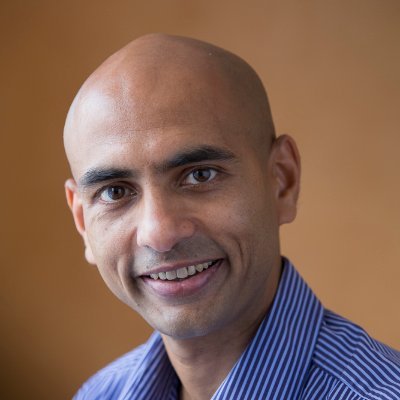
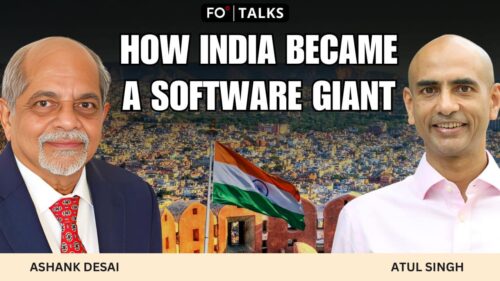


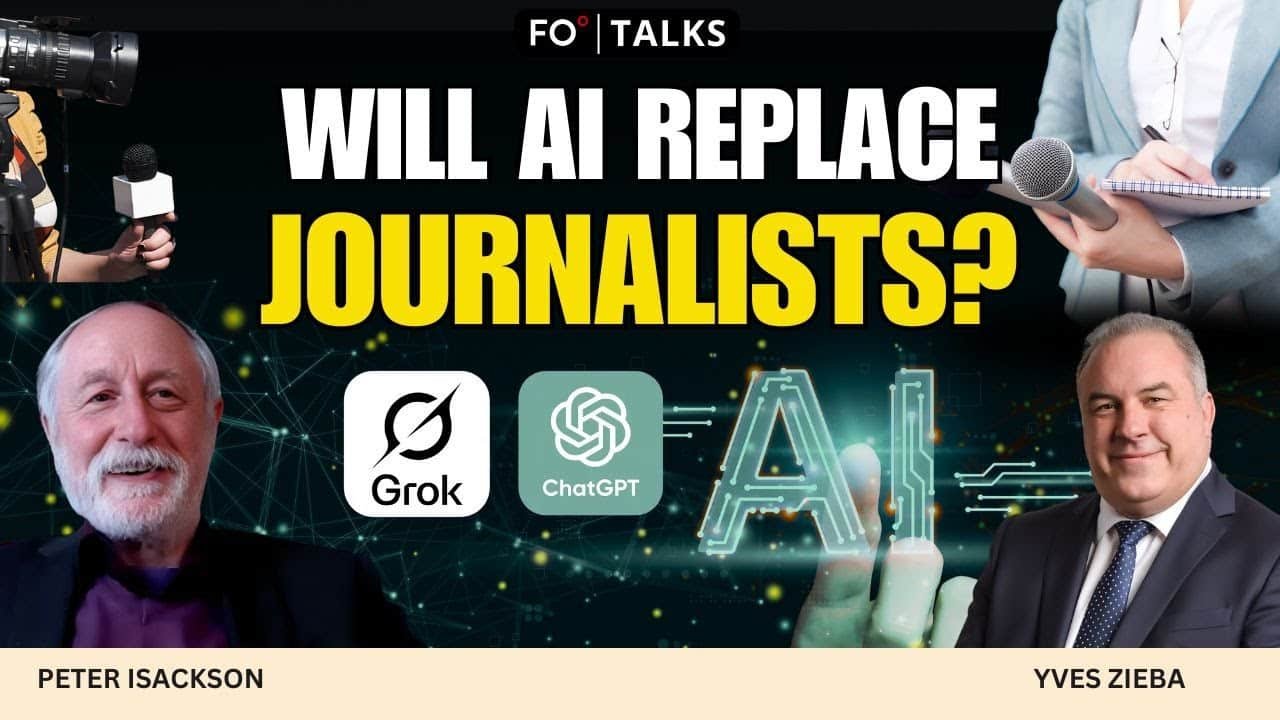

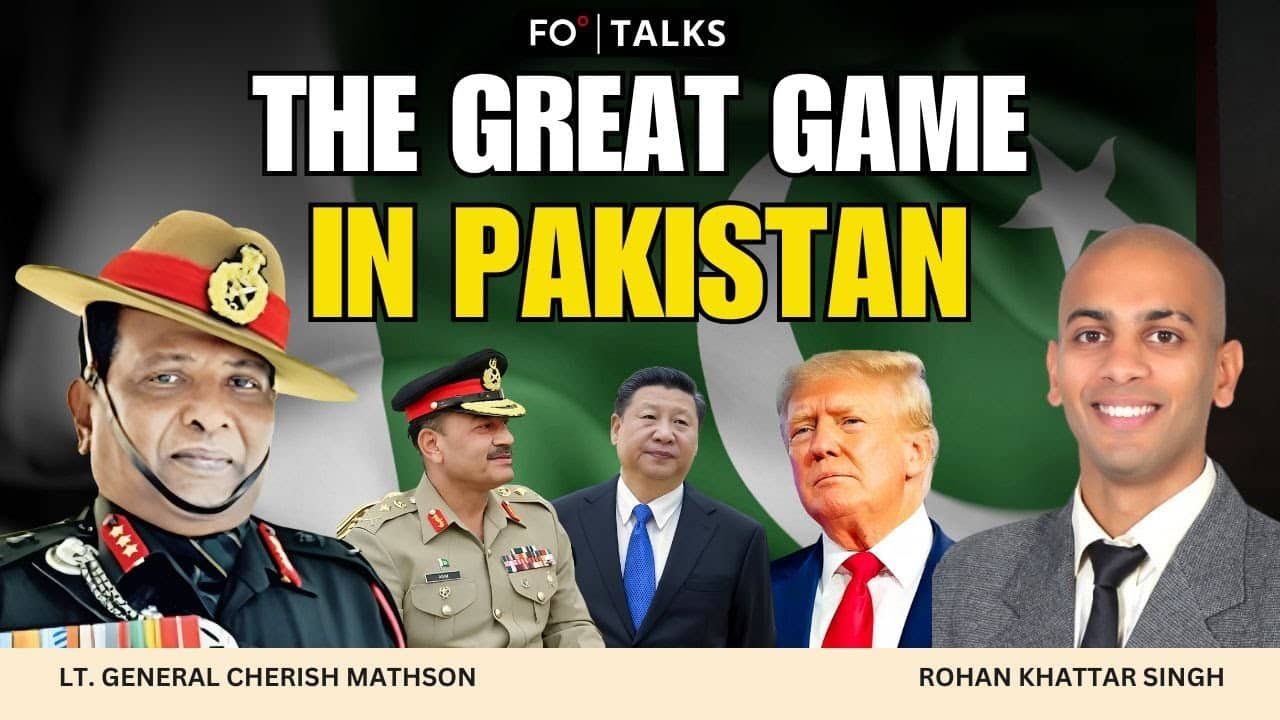

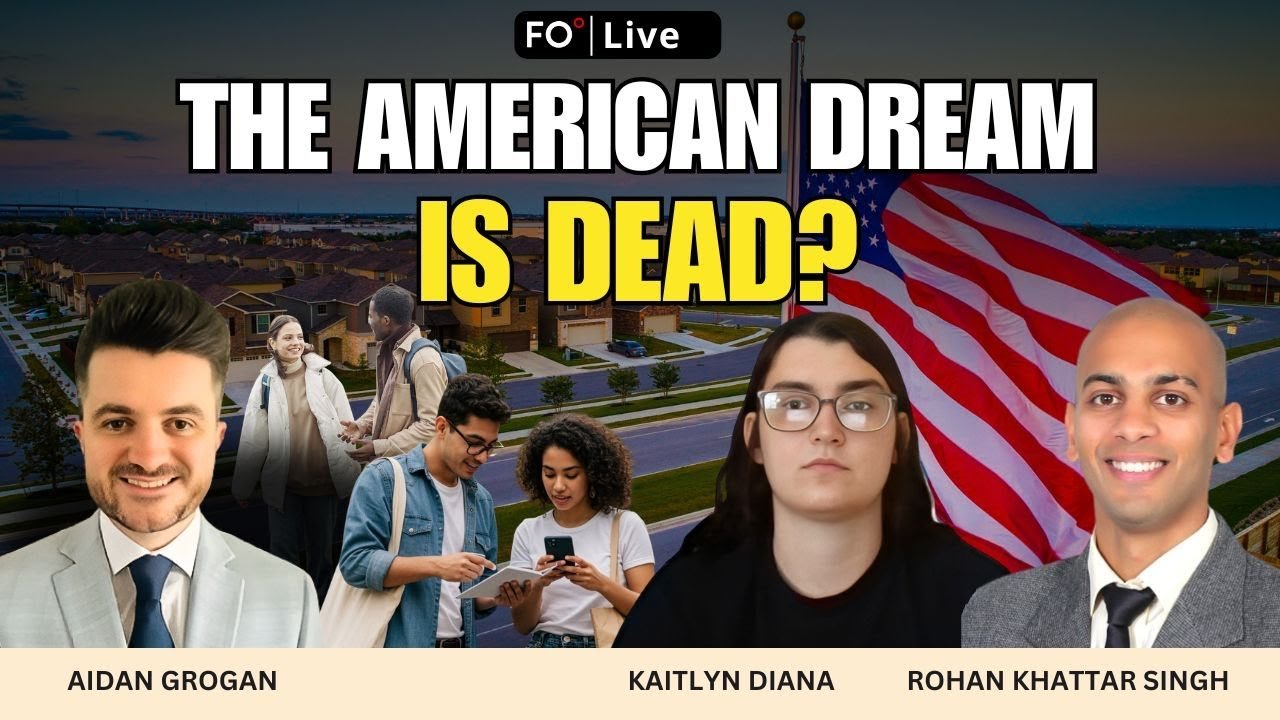

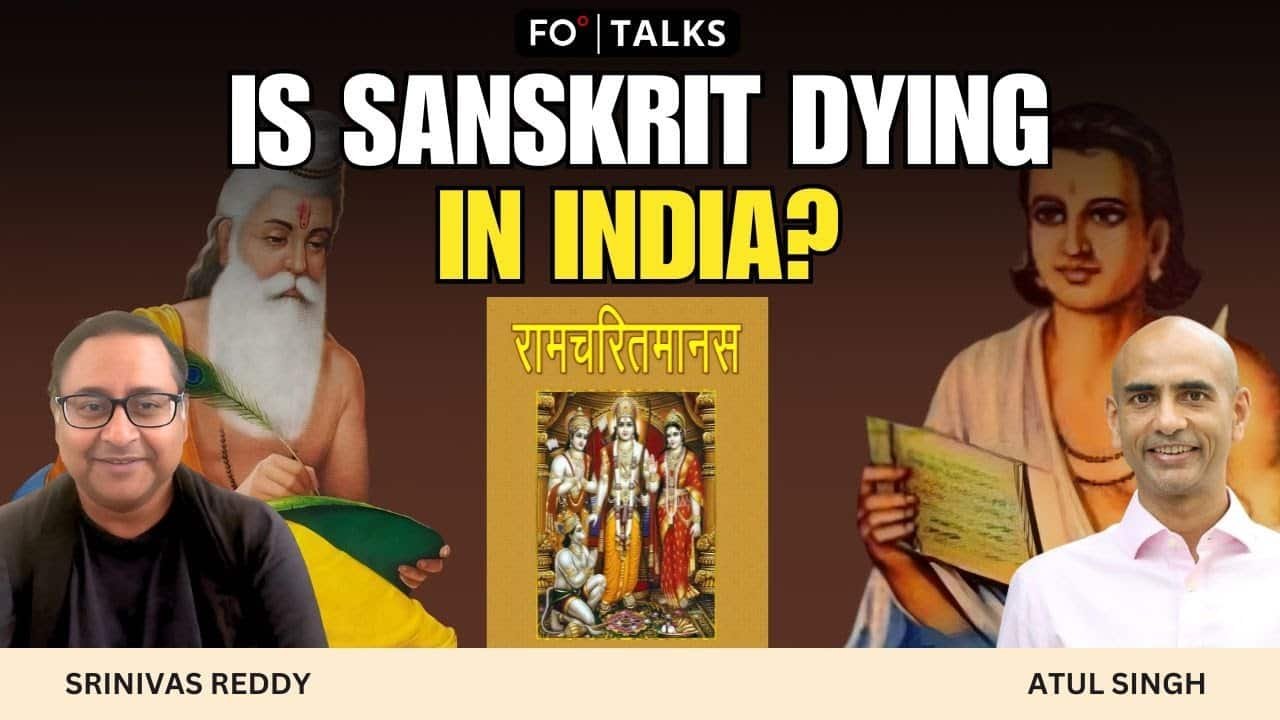

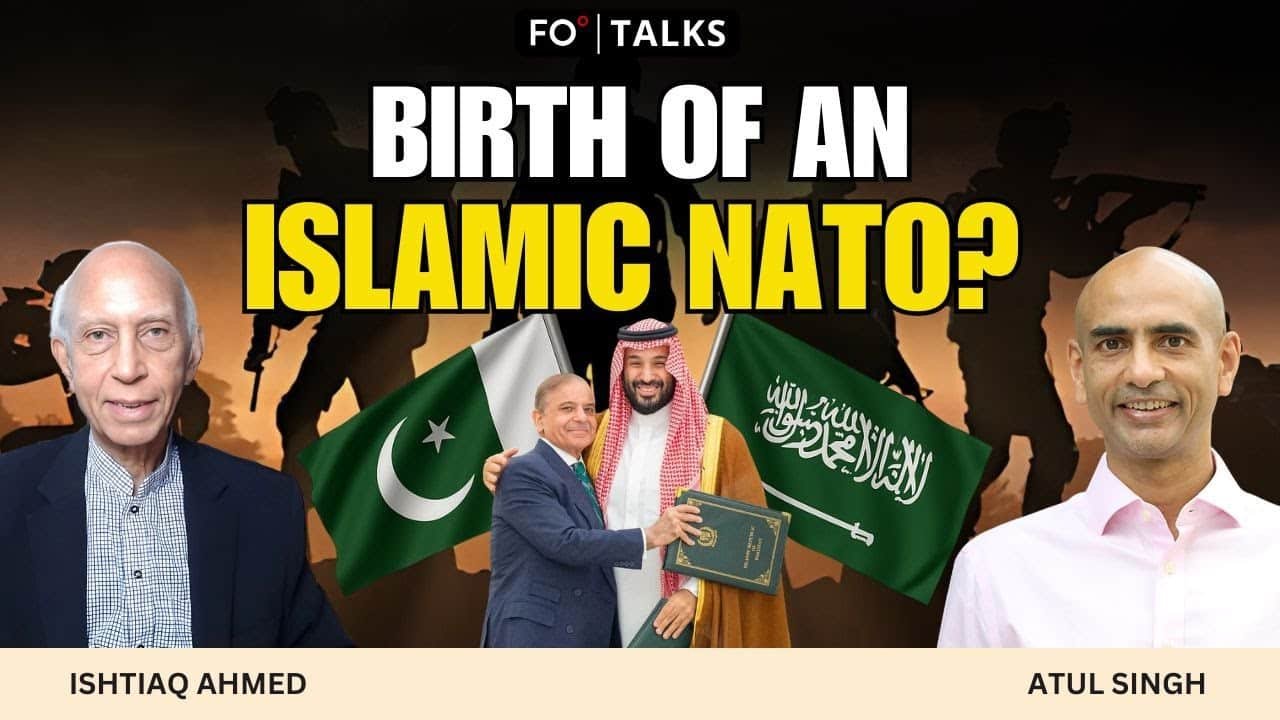
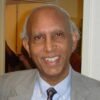




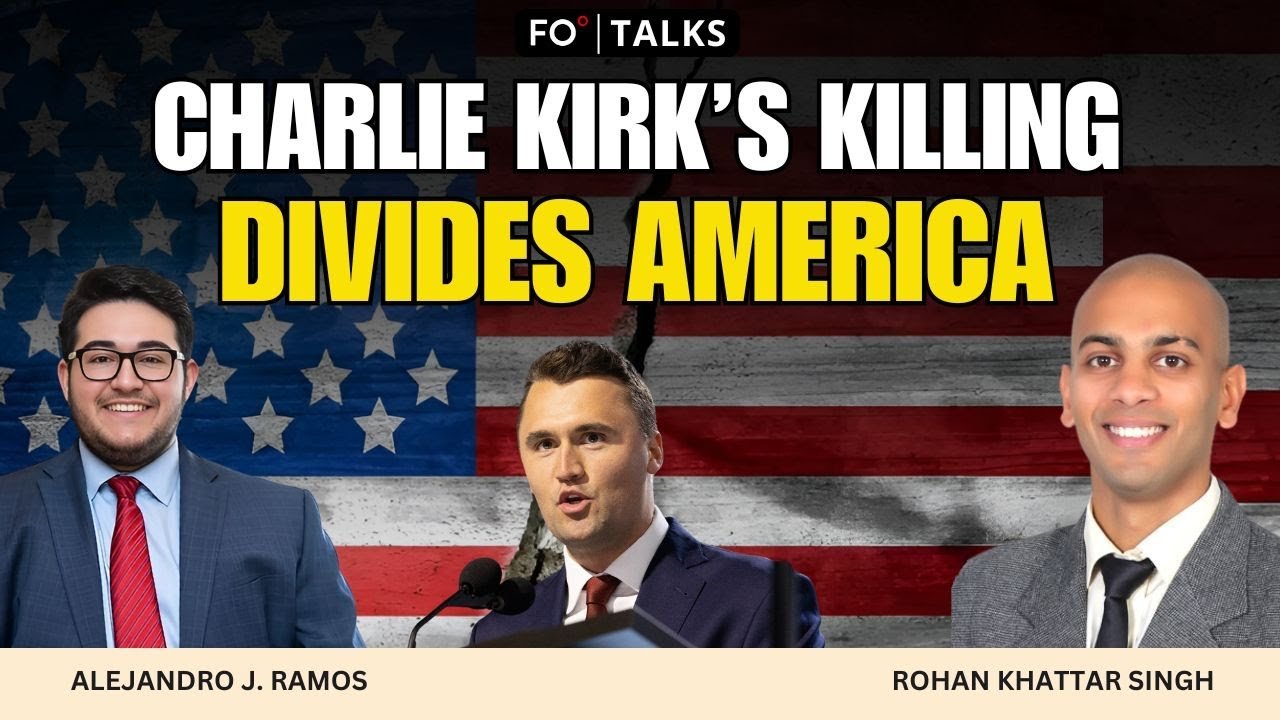

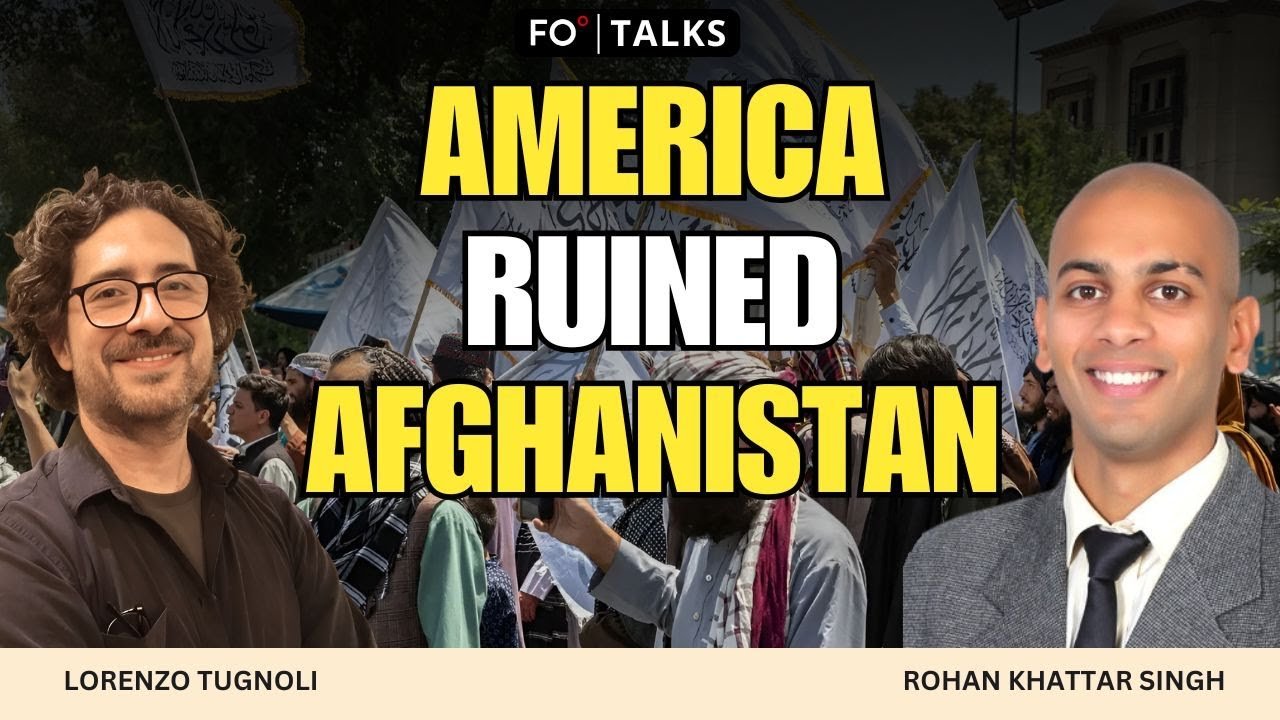
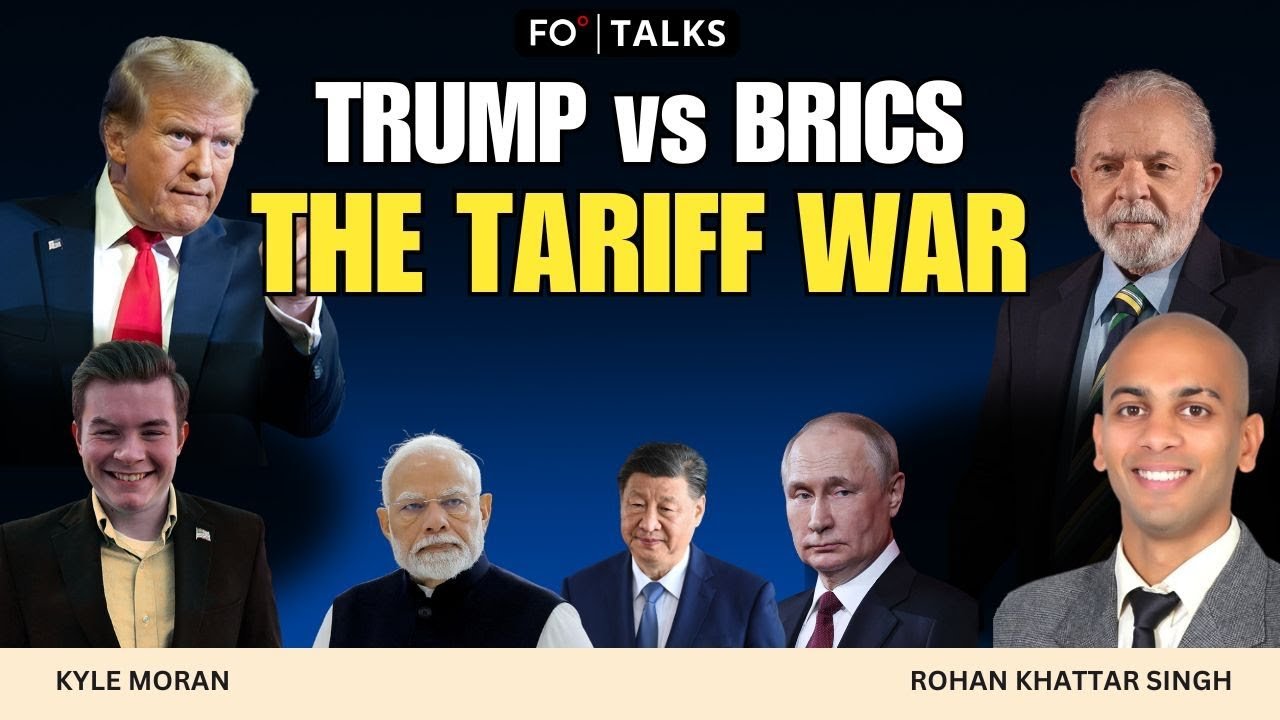







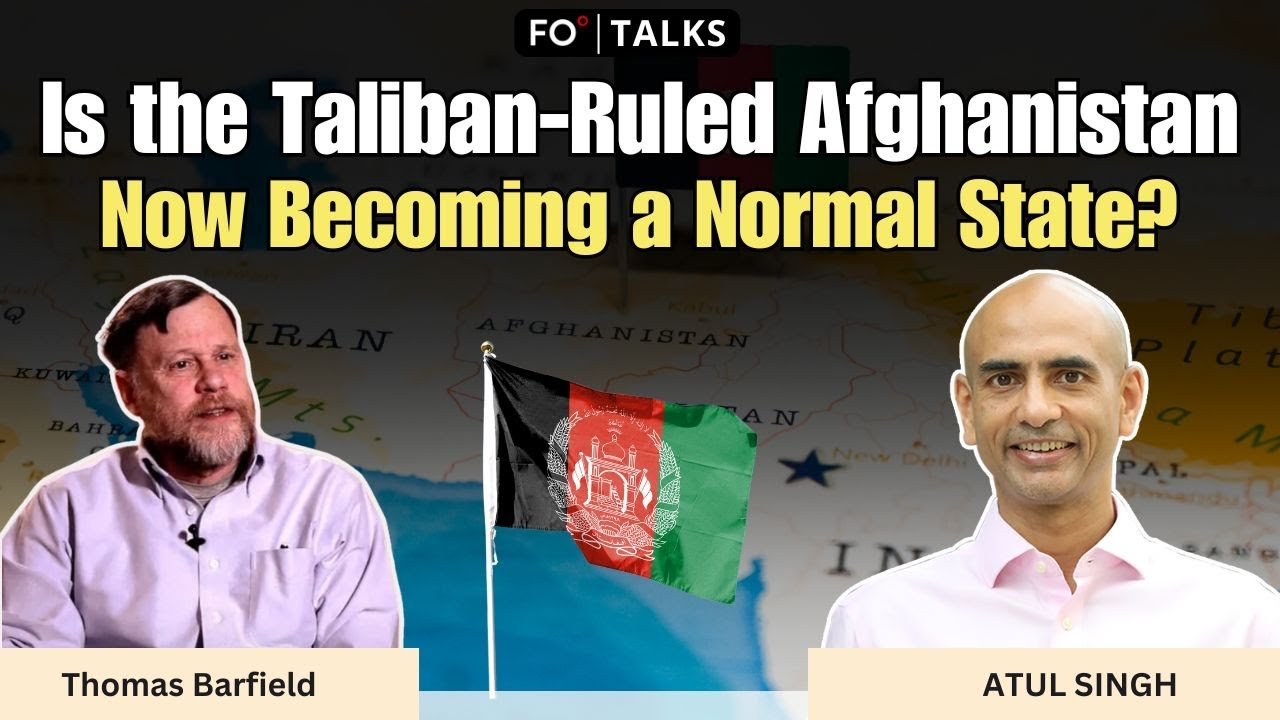


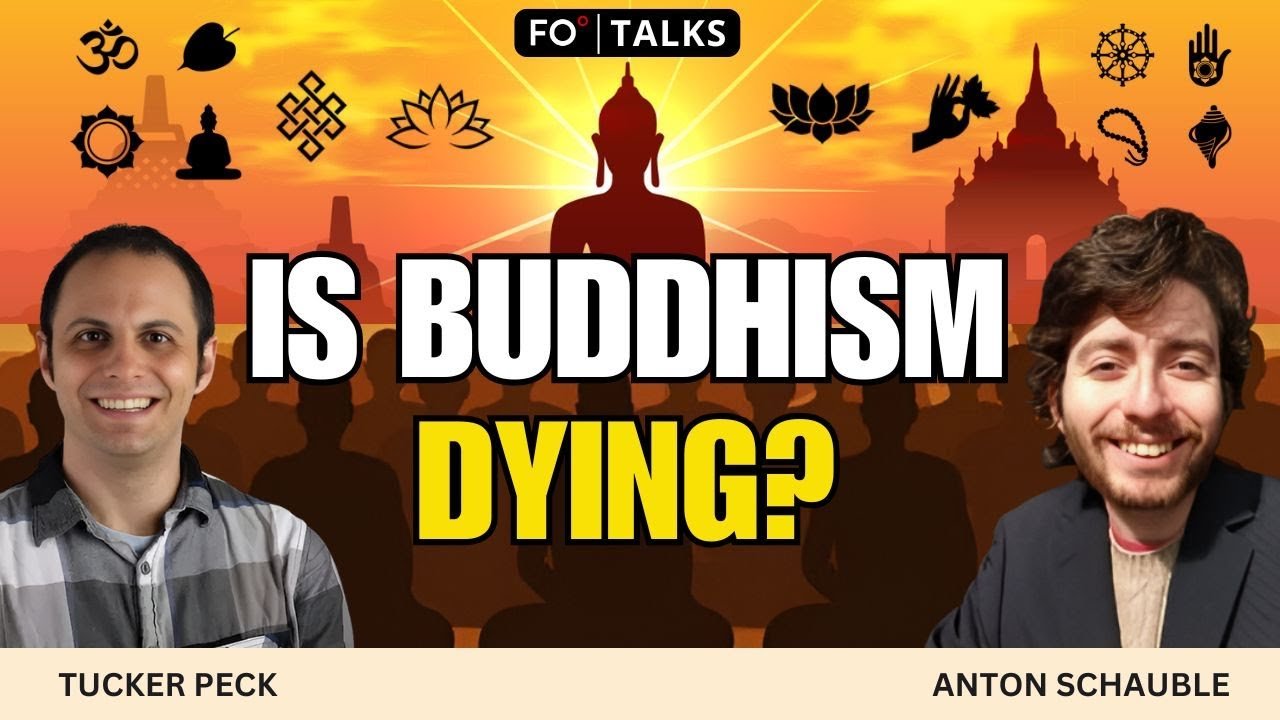

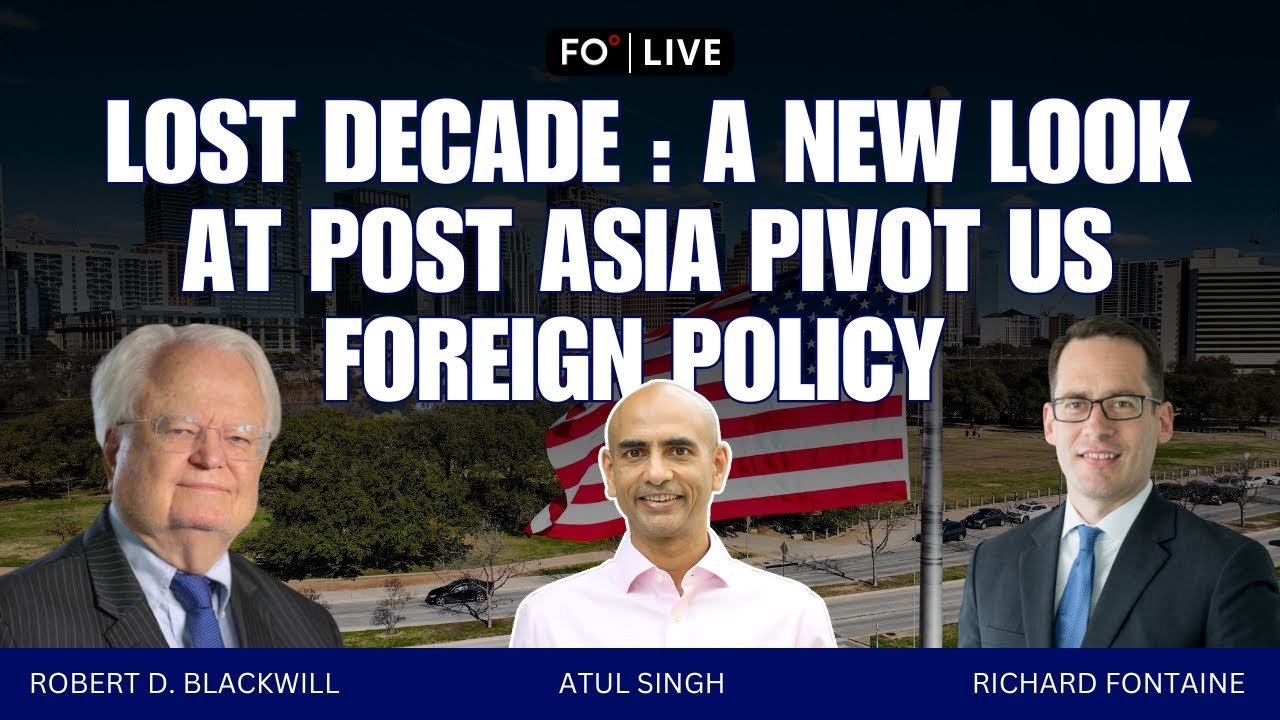

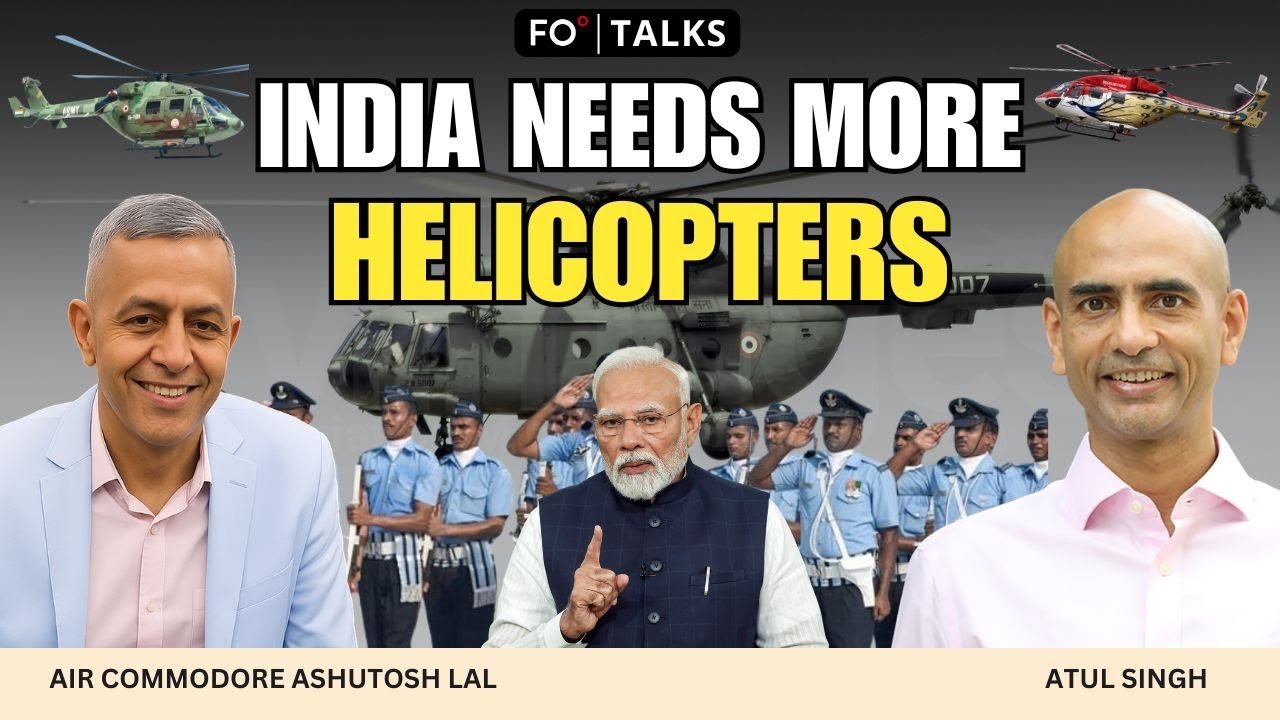




Comment